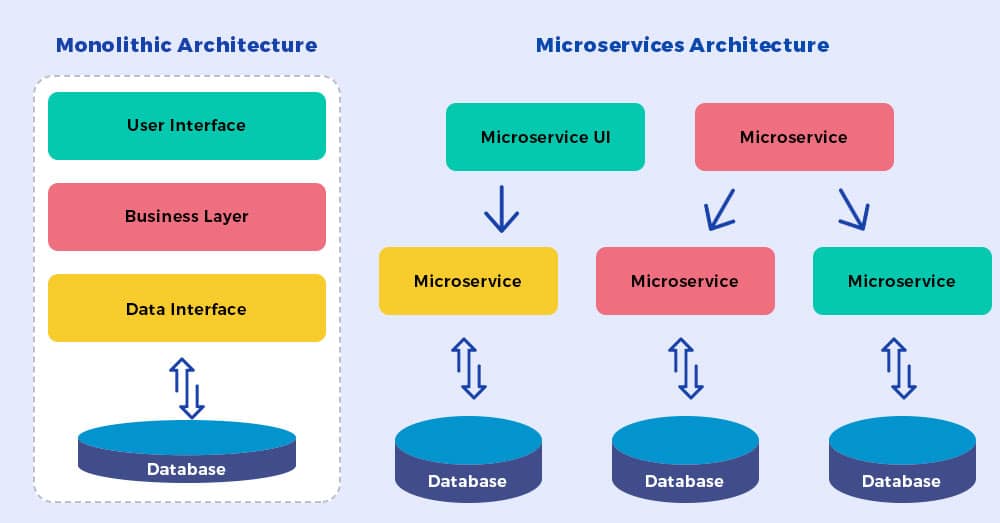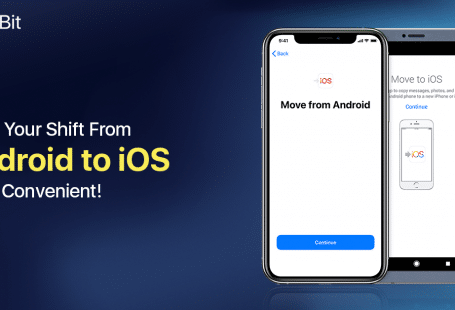A product owner with a non-technical background will always face a little more difficulty in building up his application to market his product online than compared to the ones who have good technical knowledge. Since IT is growing at a really fast pace, it is essential to know at least the basics before you launch your product.
Everyone dreams of rocking the market once their product is launched, and it could only be true when you know what you are doing.
Would you ever buy a half-eaten pizza for full cost? No, right?
Then why invest full cost into your app build up and not obtain maximum return out of it?
This would only be possible when you give careful thought to how you should build up your app, what will make your application user friendly and what are the basics of application development.
When you get an answer to the above questions, you will surely rock up that market!
In this article, we will cover:
- Meaning of application architecture
- Contemporary techniques of app development (API First, Loose coupling)
- Microservices: Definition and when to use it
- Monolithic: Definition and when to use it.
What is application architecture?
Application architecture refers to the techniques and patterns used by the developers to create a well-structured application. The elements put together are chosen based on the requirements and features of the application.
The right ingredients then cook the outstanding recipe, aka your app.
Every application is built on two sides: front-end and back-end.
Let’s understand this with a familiar example:
When we watch a movie, everything that we see on the screen is the “front”, and everything that the film consists of yet we are unable to see, like the camera roll, the video editing, dialogue creating, etc. is the “back”. So, everything that is outside is front, and all that is inside it back. That is an easy way to remember it.
Keeping this in mind, let us suppose we are building an e-commerce application. The back end of the application will deal with services like transfers, data management, exchanges, and so on, while the front end will make sure that it reaches the users in a way that they understand it.
Since now we know the basics of how an application functions, let’s learn about the modern techniques that help the developers develop an advanced application which can be easily improved and grown with changing time.
API First Method:
This method values high speed and freshness over everything else.
How it works: The process is simple, you enter the critical source data and get an Application Program Interface (API), on which both the front end as well as the back-end teams write their codes parallelly, during this the tester prepares the testing, simultaneously. It is evident that this process is undoubtedly a super time saver, but other than that, it is also cheaper to develop and reduces the risk of failures.
To illustrate,
You don’t serve the drink after the dinner, you serve it with it, or must I say, parallelly.
Why? To enhance your dinner experience, obviously. To maximize the satisfaction, you get out of it.
That is exactly what API First method does to your application; it maximizes the results.
Loose Coupling:
Loose coupling refers to the limited interconnection in a network. It refers to the direct knowledge that one system element has of the other; it is designed to be as minimum as possible.
The goal is to reduce the risk of change in other elements if we change one part. These limited interconnections enable us to identify the issues when something goes wrong and simplify the process of testing and maintenance.
The API first and Loose coupling allows the owners to run their applications on Microservices.
What Are Microservices?
Building up an application on microservices allows the developers to construct an app with independent services that are capable of functioning on their own memory space and scale freely from each other over many machines.
These are not as ‘micro’ as they sound, while they are smaller than average monolithic, they are still not so little.
Simply put, they are a group of small services all running on its own while communicating with lightweight mechanisms like HTTP. The purpose of the microservices architecture is to separate each service from the other, so even if one service fails the system will not collapse, it will keep running.
It is hands down the best architectural design to work on if you have a long term goal, since many developers can work on the same platform it is easy to maintain it throughout.
The architectural design lets you update the weak node in your application with no troubles. Another reason why it is so widely popular is because of its affordability.
There are many other reasons too as to why its a smart choice to choose microservices:
- Better organized: Since each service is concerned with only the tasks they have to do, it is better organized.
- Unconnected: Every service has particular tasks and are decoupled; this makes it easier to recompose and reconfigure services to serve the purpose of different applications.It enables fast and independent delivery of different services within an extensive system.
- Enhanced performance: The advantage of building up your application on microservices architecture is that you can separate hot services and place them independent of the use; this can boost up your apps’ performance.
- Less chances of making mistakes: Microservices enable parallel development and establish a boundary between different parts of your application. The boundary serves as a barrier for you to make any mistakes like connecting parts that need not be combined, or coupling too tightly that shouldn’t be connected.Every coin has two sides, the same way microservices are widely popular among developers but still have some limitations to it, like:
- Cost-cutting concerns: Since you are developing a microservice architecture that works in layers, you might find out a lot of cost-cutting concerns that you did not expect during the designing phase.
- The proliferation of work: Microservices are often stationed at their own virtual containers causing multiplication in the virtual machine’s job.
Choosing the right application can make your application reach new heights; hence, it is crucial to know when to use what.
When is the right time to use Microservices?
- When quick independent delivery is needed
- A part of your platform needs extra work to attain efficiency.
- When you are planning to grow your team
Some of the most renowned companies that use a microservice architecture for their applications are: Netflix, Amazon, Coca Cola, eBay, Spotify, Uber, and the list goes on.
The other application architecture you can build up your application on is:
Monolithic Architecture:
Monolithic architecture is built as one large unit comprising the same code-base for all services. It is one single and unified unit. The monolithic architecture consists of three parts:
- Database
- Client-side (HTML)
- Server-side
The server side of the application handles the HTTP request, executes it, retrieves data from the database, and generates the HTML views that must be sent to the browser.
In a monolithic architecture server-side, client-side, background jobs are all established in a vast codebase. If developers wish to change anything, they would need to build the entire stack all again.
Although microservices are preferred over monolithic architecture, it is not something that you should leave in the past and move on; this application architecture is highly ideal when you have a small team, and it is difficult for you to split services up into microservices.
Why should you choose monolithic architecture?
- Fewer cost-cutting concerns: A significant advantage of a monolithic application is that you would not have a large number of cost-cutting concerns like logging, security features, and rate-limiting. Since everything is functioning through the same application, it has hook-up components to cost-cutting concerns.
- Less complex to deploy: Since there is just one application you need to set up logging, monitoring, and testing for, it makes the intricate work of implementing everything separately easy.
- Faster performance: The monolithic architecture uses shared-memory access, which is faster than Inter-process communication used by the microservices architecture.
Some cons that must be considered while you make a choice:
- Entangled: The app service tends to get tightly coupled as the app grows, making it challenging to separate services for independent purposes.
- Hard to understand: Monolithic architectures are much harder to understand due to the dependency and side effects that are not identifiable when you look at a particular service.
So, when should you use Monolithic architecture?
- When your team is still in the founding state.
- When you are building up an idea that isn’t already in the market, since it will only evolve with time.
- When you have absolutely no or very little experience in microservices.
How to decide which one is better for you?
- If you have an abundance of knowledge about what your users expect from you, and you know how to cater to their demands, you should choose Microservices, If not Monolithic architecture is always the safest option.
- If you have a large team working for you, who have relevant knowledge and skills in microservices, nothing can be better than that. Large team size is important to give attention to and set up a database for every single service.
- Risk is the most significant factor with microservices, a lot confused teams who think of themselves to be tech-savvy build everything on microservices even when they have a small team size, or with lack of knowledge, that is where things can go wrong. Confidence is reasonable; overconfidence can sink your boat.
Well known organisations such as Amazon, eBay and Netflix used the Monolithic architecture design at their early stage, but later shifted to microservices.
Choosing the right architectural design for your application and having an eye for every single intricacy of work that is required is a must to build up that one rock-solid, the ever-developing app you can launch with a bang!
Though Only choosing the architectural design will not help you to excel, you would have to select the right team too. A team that understands your needs and helps you build up an application that you can show off later.
So, Only choose what is best for you.







